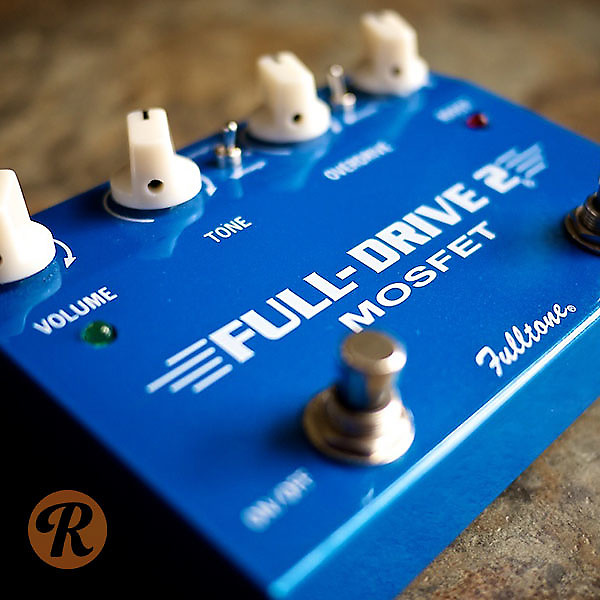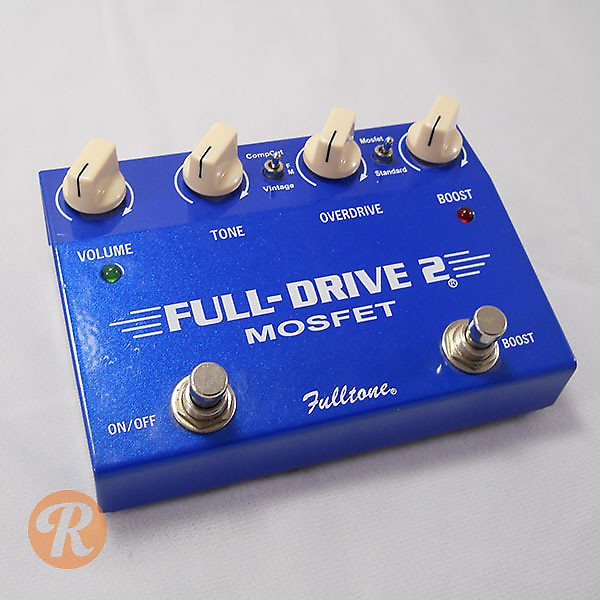
Own one like this?
Make room for new gear in minutes.Compare 0 Listings
Product Details
Gallery







Product Specs
| Brand | |
| Model |
|
| Finish |
|
| Year |
|
| Made In |
|
| Categories |
Overview
Video
Price Guide
*Excludes Brand New, B Stock, Fair, Poor, and Non-functioning. Prices exclude shipping and tax/VAT/GST.
Product Reviews
More Information
Overdrives are often the first pedal that a player buys and the last one to go if a player is going minimalist with effects. They are as close as it gets to an essential pedal (aside from tuners). As a result, the market is bursting with more overdrives than you can count, each one promising to somehow be unique and special. Through all the overdrive frenzy, the Fulltone Full Drive 2 has stood like a rock of strength, rising above the fray to provide a durable, versatile single-box solution that sounds fantastic.
In the beginning there was the Ibanez Tube Screamer. Both the TS-808 and the TS-9 etched themselves into guitar history in the '80s and '90s, creating a wave of demand for that Tube Screamer sound. Part of the reason the Fulltone Full Drive 2 became so popular is that it offers the ability to replicate classic screamer tone with the additional options of removing compression, shaping the mids and adding a second stage of boost (and in the case of the MOSFET, choosing clipping type). The versatile play on a classic formula, along with its reliability and sound, cemented the Full Drive 2 as a modern classic.
What exactly can it do?
As a dual channel overdrive, it is surprisingly simple. Channel one offers a low to mid-gain overdrive on that is less-compressed and more transparent than most screamer-type overdrives. On the other channel, you have a "Boost" mode, adding a second gain stage for soloing and sustain, which adds more a screamerish mid-boost and slight compression. Volume and Tone knobs apply to both channels, while Overdrive applies to channel one and Boost controls channel two. It is true bypass and features bullet-proof hand-built components, so you get clean operation every time.
What does MOSFET mean and how does it differ from the standard Full Drive 2?
Released in 2007, the Fulltone Full Drive 2 MOSFET is not just an updated casing. This version of the pedal features two additional toggle switches for five different modes, vastly increasing the unit's versatility. The MOSFET toggle switches between asymmetrical clipping for a more open, harmonic sound and tighter, more aggressive clipping sent through a metal-oxide-semiconductor field-effect transistor (MOSFET).
The other toggle switches between a Vintage mode for low to mid-gain dirt (sounds great on a Strat neck pickup), FM mode for slightly less gain and a different EQ shape and Comp Cut mode, which turns the Full Drive 2 into an entirely different beast, boosting the volume, articulation and brightness considerably.
How does this compare to the Full Drive 3?
The Full Drive 3 is basically a Full Drive 2 that has the ability to put the Boost channel before or after the Overdrive channel, as well as acting independently as a fully clean JFET boost. The Full Drive 3 also had a toggle for three different modes, though the modes are a bit different. Only 5,000 units of the FD3 were initially produced.
I'm hesitant. It seems like a lot of pedalboard space to give up just for an overdrive.
Keep in mind that if you bought a standalone transparent overdrive, like the Fulltone OCD, you would probably end up supporting it with a clean boost anyway (see the Xotic EP Booster for a good staring point). Few pedals (or pairs of pedals) can provide the level of shaping and versatility with boost and standard overdrive as the Fulltone Full Drive 2 without taking up that same amount of space. It keeps things simple, consolidated and secure. Fulltone units are respected for their durability.

